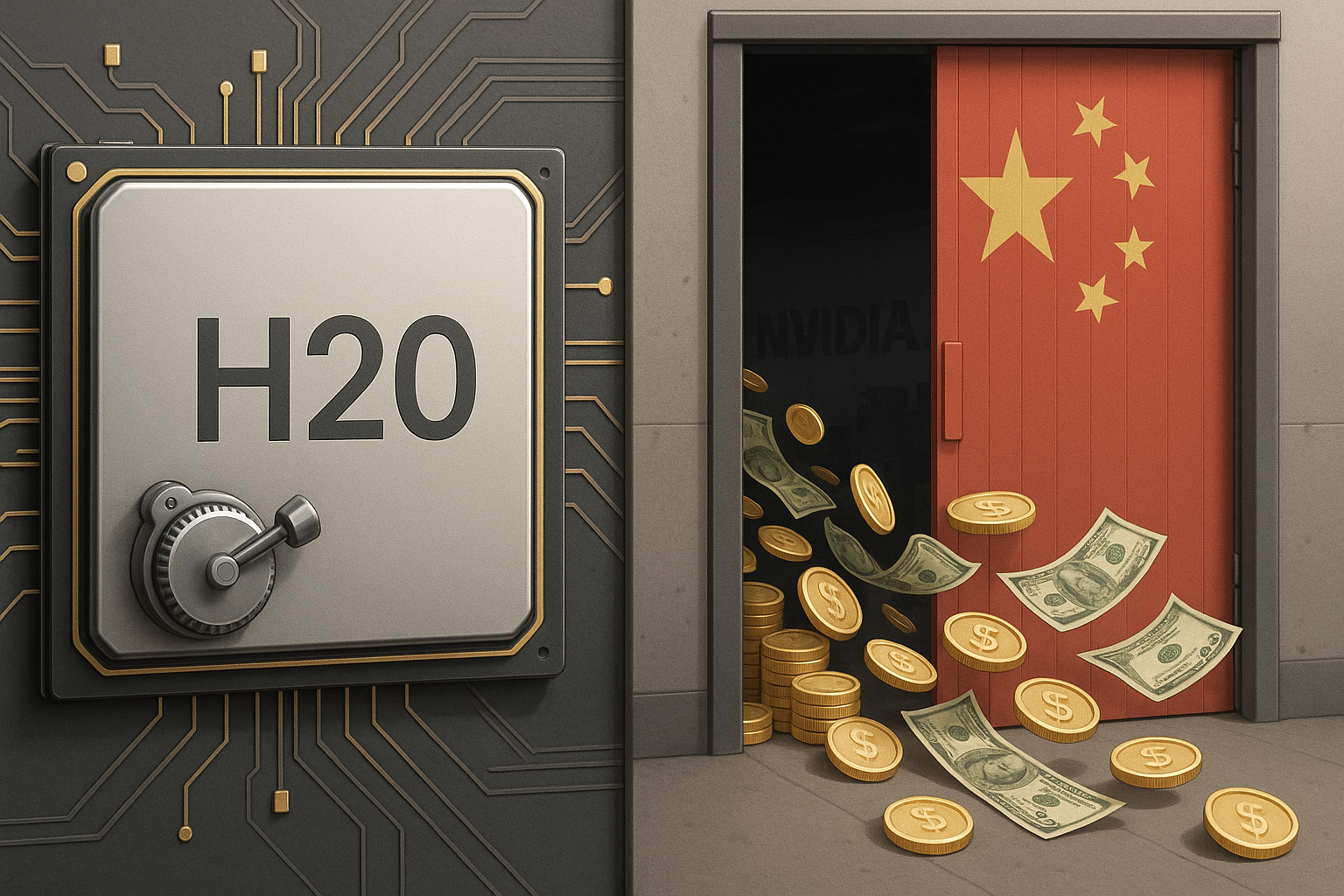Well, well, well. Just when we thought geopolitical tensions had slammed the door on Nvidia's China business, the company appears to have found itself a rather convenient doggy door.
After spending months licking its wounds from April's export restrictions, Nvidia now seems poised for what analysts are calling a "remarkable turnaround" in its China operations. According to industry insiders, Trump administration officials have quietly signaled that the company can resume selling its specially designed H20 chips to Chinese customers—potentially unleashing up to $15 billion in revenue that many had written off entirely.
The stock market, which has never met an Nvidia headline it didn't like, promptly sent the company's shares climbing. Again. (At this point, Nvidia stock seems to operate in some parallel universe where gravity is merely a polite suggestion rather than a law of physics.)
What's particularly fascinating here isn't just the money involved—though $15 billion is nothing to sneeze at—but the elegant regulatory dance Nvidia has performed. The H20 chip represents a masterclass in what you might call "compliance engineering."
Let me explain.
The chip is essentially a neutered version of Nvidia's more powerful AI processors. It's been deliberately hamstrung to stay within export guidelines while remaining useful enough that Chinese tech companies will still reach for their wallets. It's like selling a sports car with the engine governor permanently engaged—not ideal, but still better than walking.
I've covered tech export policies for years, and this pattern repeats with almost clockwork predictability. The U.S. government implements restrictions, tech companies respond with creative compliance, and business finds a way to flow—albeit through narrower channels.
"Pent-up demand will drive accelerated cadence of H20 ingestion," predict analysts at Stifel, Bernstein, and William Blair. That's corporate-speak for "Chinese companies are desperate for chips and will buy whatever Nvidia is allowed to sell them."
So desperate, in fact, that Nvidia might reach around $20 billion in China revenue for its 2026 fiscal year—surpassing even its pre-ban sales of approximately $17 billion. Talk about a comeback story.
The timing here deserves special attention. These "assurances" Nvidia reportedly received exist in a peculiar political limbo. A new administration could take an entirely different stance on technology transfers to China. This creates what amounts to a temporary regulatory arbitrage opportunity—a chance for Nvidia to ship as many compliant chips as possible before the political winds potentially shift direction.
Look, technology containment has always been more art than science. Remember Huawei? The initial sanctions seemed like a death blow, but the company adapted and survived, even if its global ambitions took a haircut in the process.
What we're watching unfold is the commercial equivalent of water finding its level. Complete technological decoupling between the U.S. and China remains more theoretical than practical—the economic gravitational forces are simply too powerful.
For investors, the most important takeaway is that Nvidia's story continues to be one of supply constraints rather than demand questions. The company essentially sells every chip it produces; the only real limitation is whether regulations allow particular customers to buy them.
Having followed the semiconductor industry through several cycles of geopolitical tension, I've noticed these regulatory interventions rarely achieve exactly what policymakers intend. They create friction, yes. They slow technology transfer, certainly. But they seldom stop it entirely.
Instead, what emerges is a more complex, paperwork-heavy landscape where slightly less capable technology still flows to restricted markets—just with more steps and higher compliance costs along the way.
The H20 situation highlights this reality perfectly. It doesn't represent a defeat of export control policy so much as it reveals the natural limitations and adaptations that inevitably emerge.
For Nvidia, at least for now, the China door is creaking back open. And $15 billion worth of slightly-less-powerful chips stand ready to rush through it.



